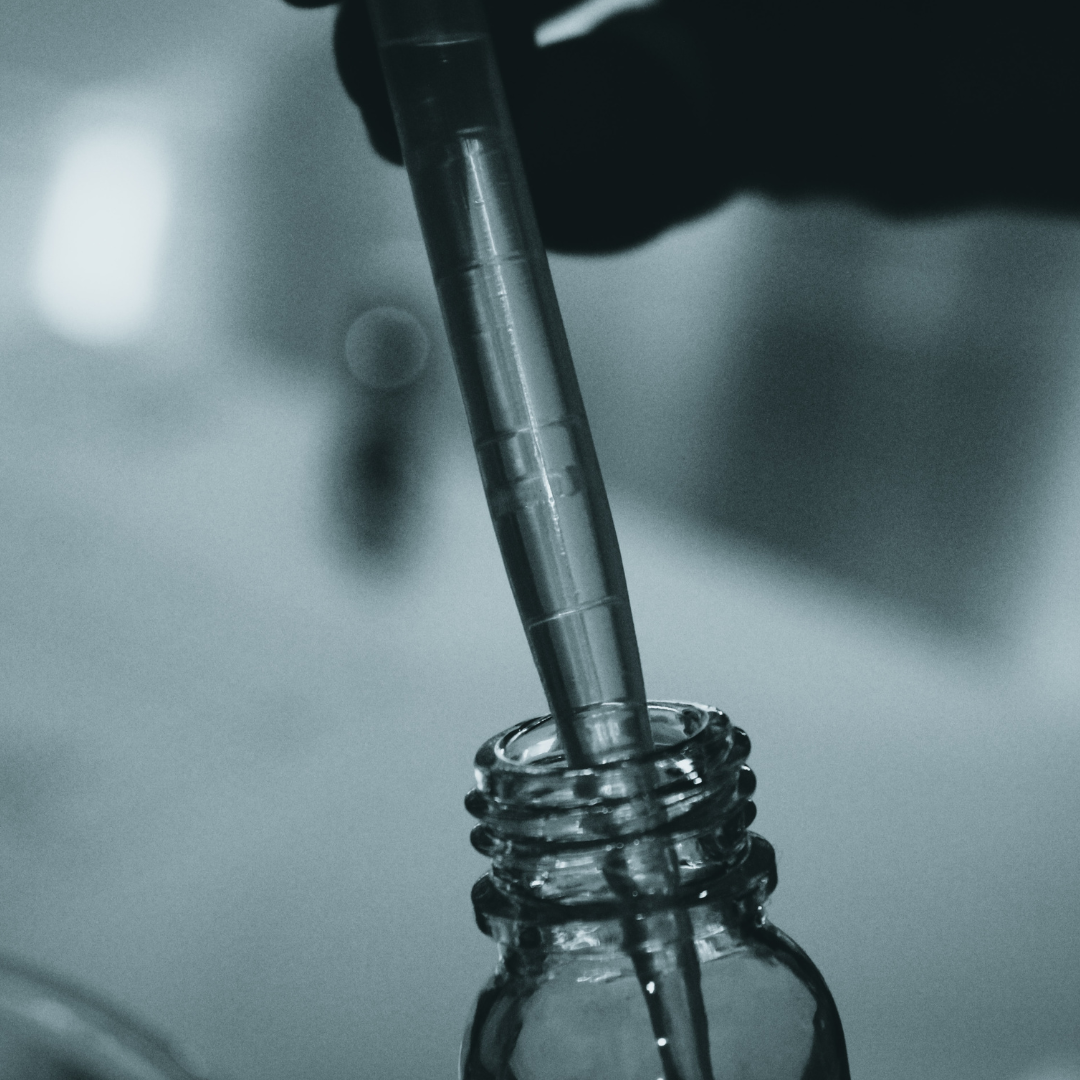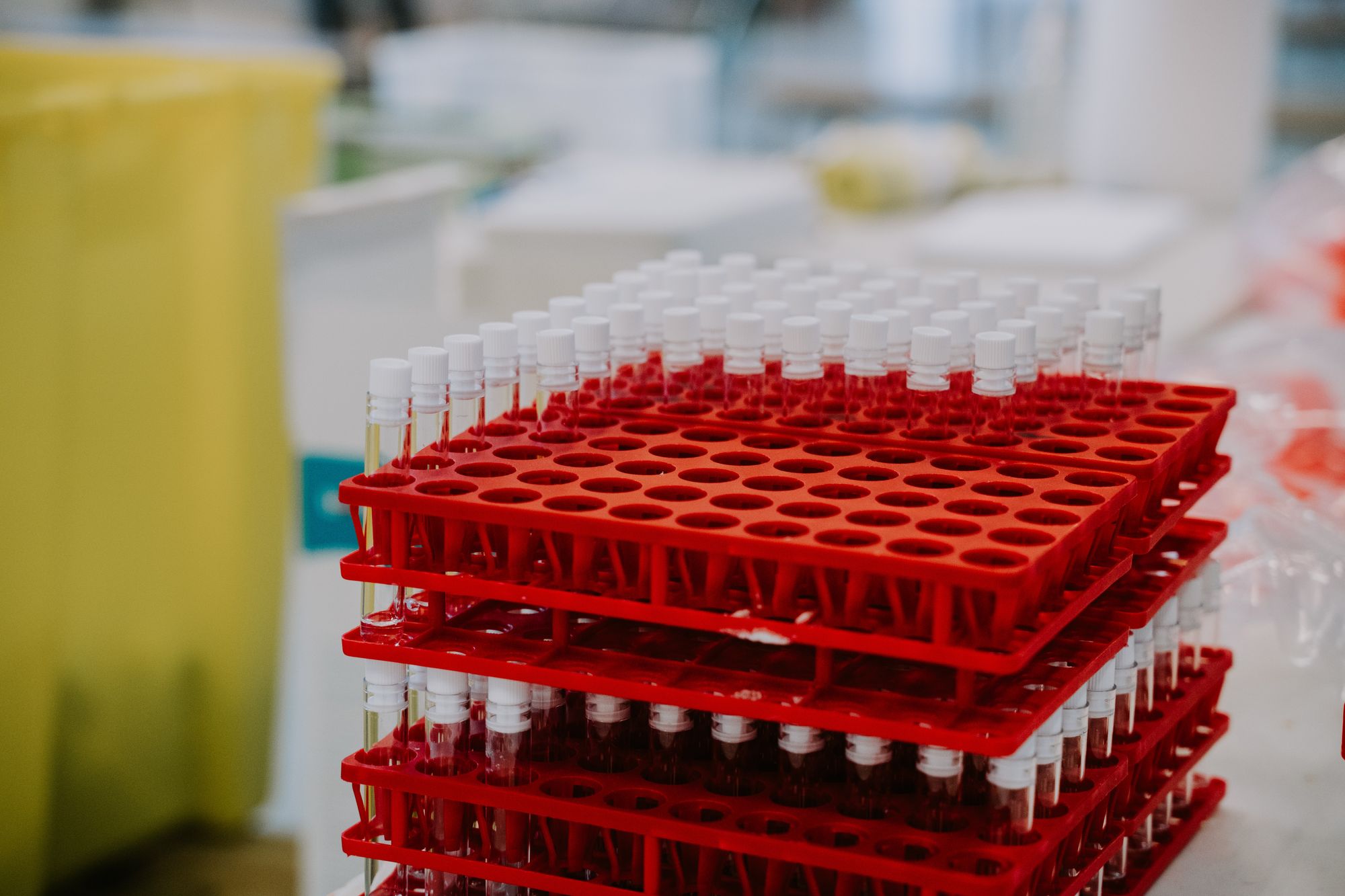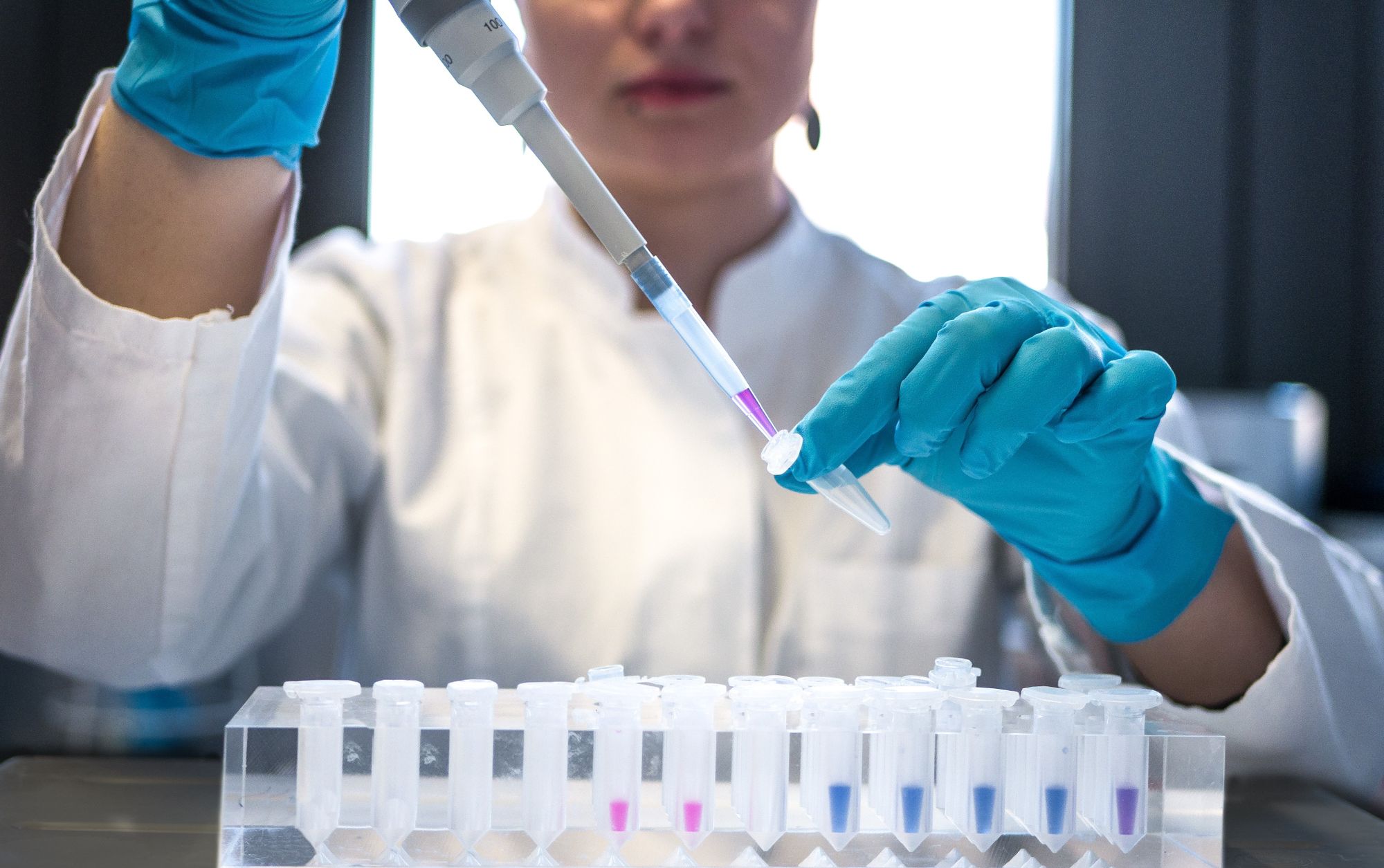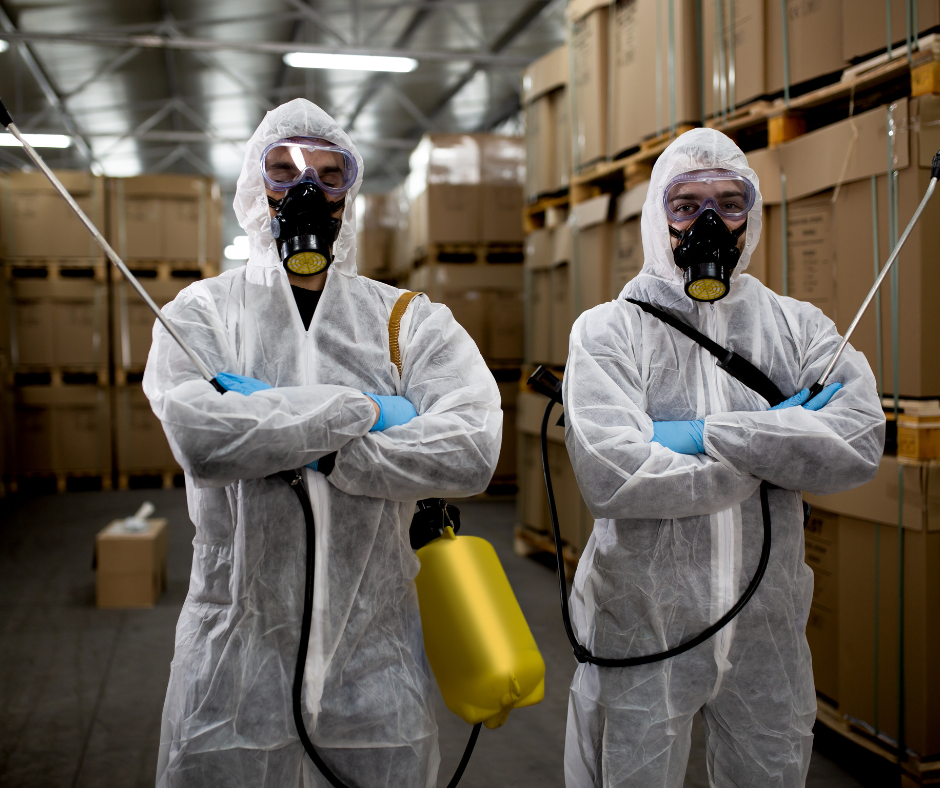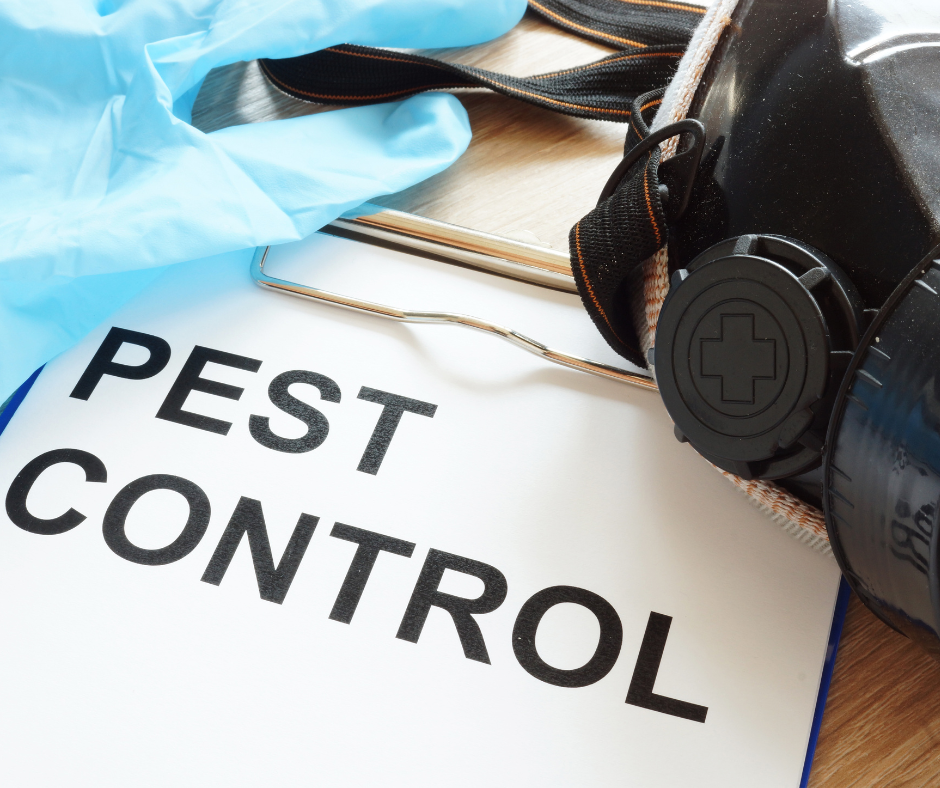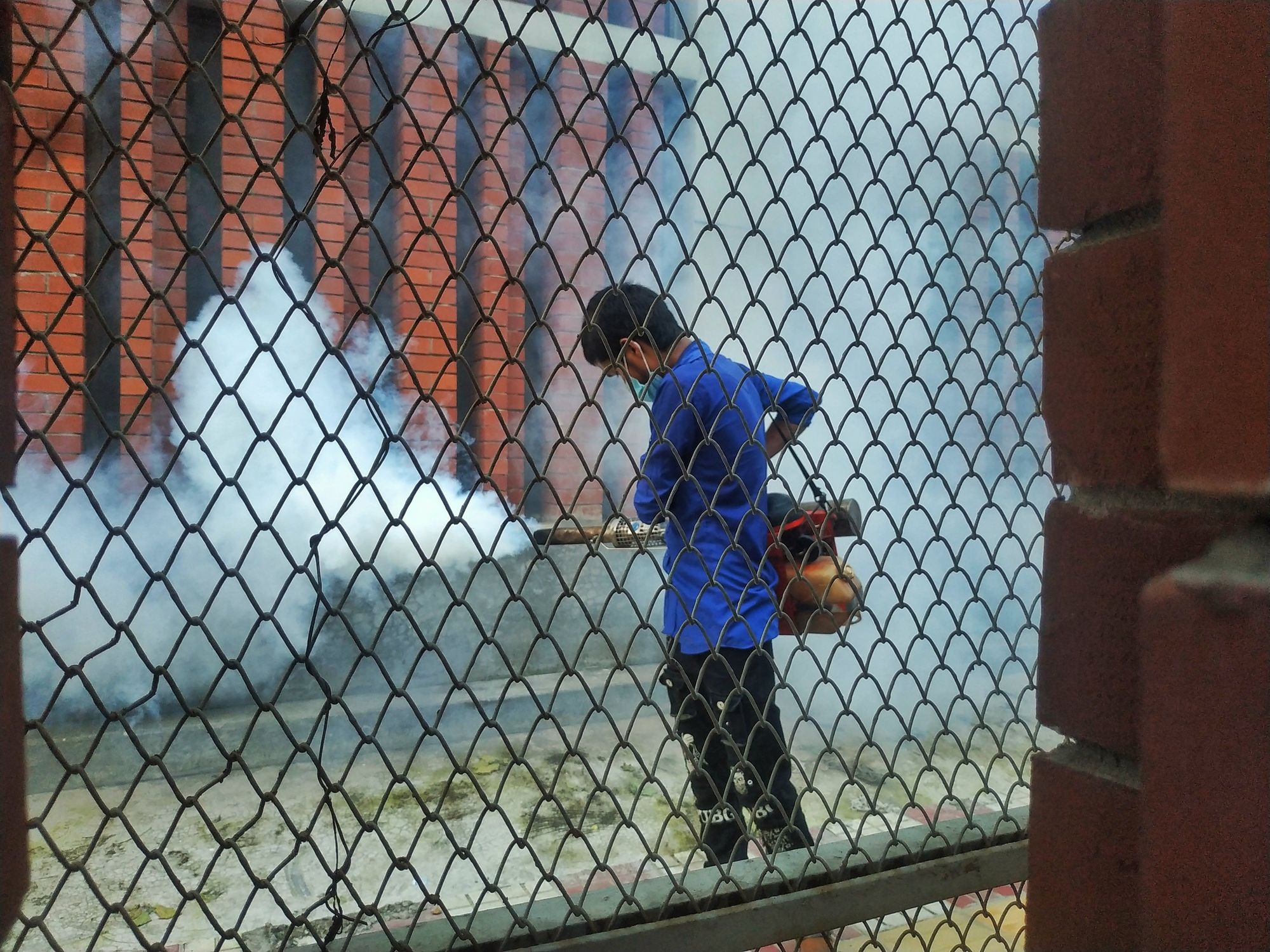As per Statista, the cost of developing new pesticides is increasing due to the need to meet stricter environmental and safety regulations, as well as increased research and development costs.
The cost of manufacturing pesticides has increased due to rising prices of raw materials and increased regulatory requirements. In 2020, the global cost of raw materials for pesticide manufacturing increased by 25% compared to the previous year. (Source: CropLife International)
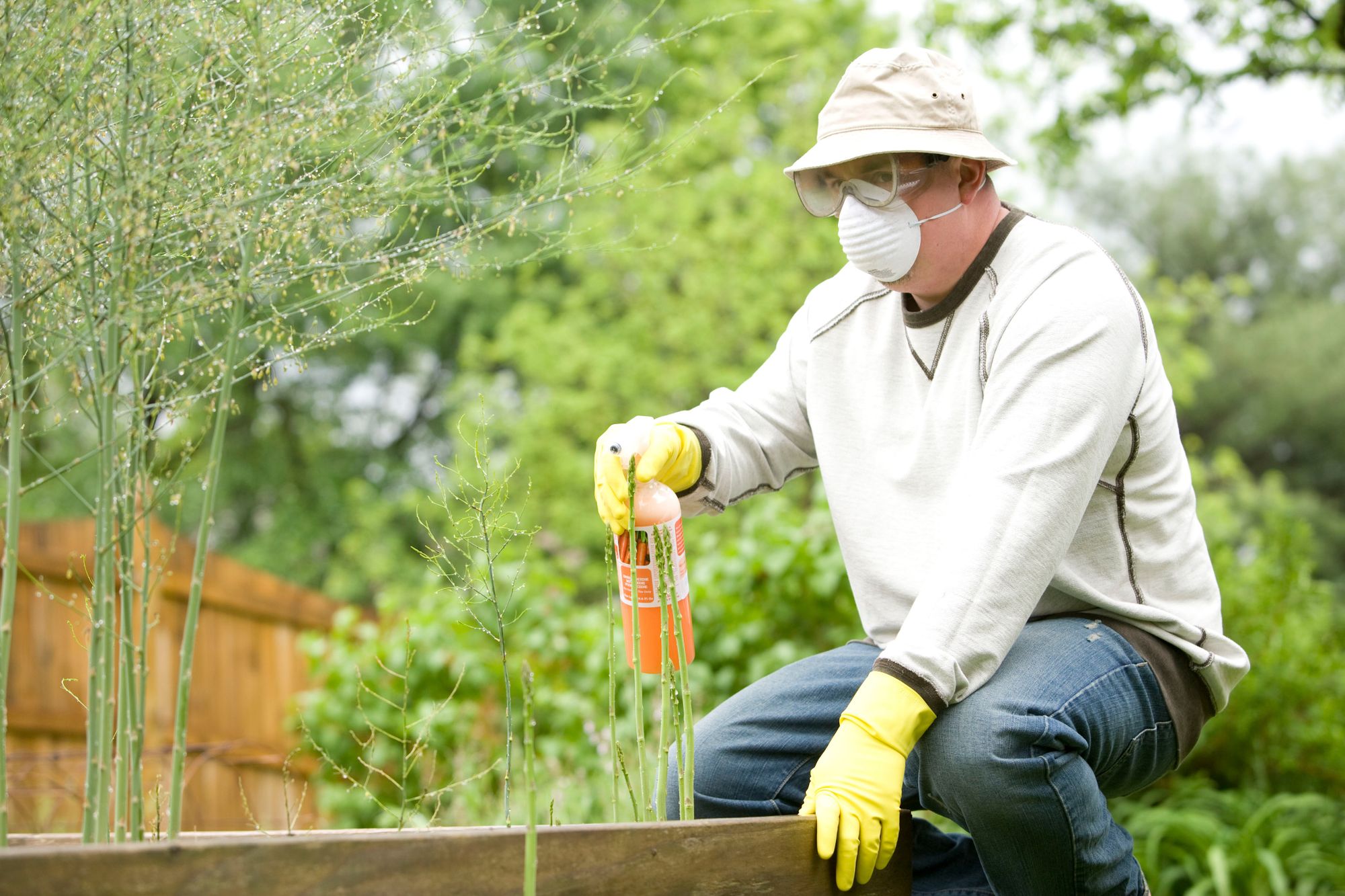
According to IBISWorld, the cost of manufacturing and storing pesticides has increased due to rising energy prices, increasing transportation costs, and tighter regulations.
However, the global pest control market size is expected to reach $29.1 billion by 2027, growing at a CAGR of 5.3% from 2020 to 2027. (Source: Grand View Research)
Thus, to be able to make the most of this rising demand, it has become vital for pest control chemical manufacturers like you to find ways to reduce their costs.
This article will be your complete guide to it by covering the following topics:
- What is Pest Control Chemical Manufacturing?
- What is Leading to Rising Costs in Pest Control Chemical Manufacturing?
- Strategies to Reduce the Cost of Pest Control Chemical Manufacturing
- What is the Importance of Reducing the Cost of Pest Control Chemical Manufacturing?
- How will the Implementation of the MRP System Help in Reducing Costs in Pest Control Chemical Manufacturing?
- How can Deskera Help You Reduce Costs in Your Pest Control Chemical Manufacturing?
- Key Takeaways
- Related Articles
What is Pest Control Chemical Manufacturing?
Pest control chemical manufacturing is the process of producing chemicals that are used to control or eliminate pests, such as insects, rodents, and other unwanted organisms.
These chemicals, commonly known as pesticides, are designed to be toxic to pests and are used to protect crops, control insect populations, and prevent the spread of diseases transmitted by insects or rodents.
Pest control chemical manufacturing involves various processes, including the formulation of active ingredients, the blending of chemicals, and the packaging of finished products. The active ingredients used in pesticides can be synthetic or natural, and their effectiveness varies depending on the type of pest being targeted.
The manufacturing of pest control chemicals is subject to strict regulations and safety standards to ensure that the products are safe for use and do not harm the environment. The use of pesticides is also regulated by government agencies to ensure that they are used in a safe and responsible manner.
What is Leading to Rising Costs in Pest Control Chemical Manufacturing?
There are several factors contributing to the rising costs in pest control chemical manufacturing, including:
- Increasing regulatory requirements: Governments around the world are imposing stricter regulations on the production and use of pesticides to protect human health and the environment. This has increased the costs associated with developing, registering, and manufacturing pesticides that comply with these regulations.
- Research and development: Developing new and effective pest control products requires significant investment in research and development, which can be expensive. As pests become more resistant to existing pesticides, the need to develop new products has become increasingly important, leading to higher costs.
- Raw material prices: The prices of raw materials used in the production of pesticides can be volatile, and changes in prices can significantly affect the cost of production.
- Energy costs: The energy required to manufacture pesticides can be significant, and rising energy costs can lead to higher production costs.
- Transportation costs: The transportation of raw materials and finished products can be expensive, particularly for products that need to be transported long distances.
- Labor costs: The cost of labor is a significant factor in pesticide manufacturing, as the process can be labor-intensive, requiring skilled workers.
Overall, the combination of these factors, along with the need to meet the increasing demand for pest control products, has contributed to rising costs in the pest control chemical manufacturing industry.
Strategies to Reduce the Cost of Pest Control Chemical Manufacturing
There are several ways that pest control chemical manufacturers can reduce the cost of their manufacturing processes. Here are some strategies that may be helpful:
Optimize Manufacturing Processes
Pest control chemical manufacturers can optimize their manufacturing processes to reduce costs. This can include streamlining production processes, improving equipment efficiency, and reducing waste.
Thus some of the ways in which optimizing manufacturing processes can help reduce the cost of pest control manufacturing are:
- Increased Efficiency: By optimizing manufacturing processes, the production line can operate more efficiently and reduce the amount of waste generated. This can lead to a reduction in production costs, which can be passed on to the consumer. In turn, there would be an improvement in customer retention as well as in business metrics.
- Improved Quality Control: Optimizing manufacturing processes can help to ensure that the pest control products being produced meet strict quality standards. This can reduce the need for rework and waste, which can result in significant cost savings because there would be no additional operating costs. This would also improve operational metrics.
- Better Inventory Management: By optimizing manufacturing processes, companies can better manage their inventory levels, reducing the need to stockpile raw materials or finished products. This can help to reduce the amount of money tied up in inventory and lower storage costs. In fact, you would be able to respond to the reorder point of your inventory appropriately and on time. All of this will also reduce the need for safety stock, which will help you save expenses and increase your ratio of operating income to operating expenses.
- Streamlined Supply Chain: Optimizing manufacturing processes can help to streamline the supply chain, reducing the time and costs associated with transportation and distribution. This can result in faster delivery times and lower transportation costs. It will also help in preparing for supply chain disruptions and the bullwhip effect in supply chains.
- Enhanced Automation: By automating certain manufacturing processes, companies can reduce labor costs and improve product consistency. This can lead to a reduction in the cost of production and an increase in overall efficiency. It will also ensure that you are able to follow your master production schedule better.
Use Cost-Effective Ingredients
Manufacturers can look for cost-effective ingredients that can still provide the same level of effectiveness as more expensive alternatives. This can include sourcing ingredients from different suppliers or exploring new and innovative formulations that can achieve the same results with less expensive ingredients.
Using cost-effective ingredients can help reduce the cost of pest control manufacturing in several ways:
- Lower Material Costs: The cost of materials is a significant factor in the cost of pest control manufacturing. By using cost-effective ingredients, manufacturers can reduce their raw material costs, leading to a lower overall cost of production and, therefore, higher gross profit margins.
- Reduced Waste: Using cost-effective ingredients can also help reduce waste during the manufacturing process. When materials are expensive, manufacturers may be more cautious in their use, leading to less waste. Additionally, using cost-effective ingredients can help to reduce the cost of disposing of waste materials.
- Increased Production Efficiency: Cost-effective ingredients can also improve the efficiency of the manufacturing process. Ingredients that are easier to work with or require less processing can lead to faster production times and reduced labor costs. It will also lead to reduced manufacturing lead times.
- Improved Product Quality: Cost-effective ingredients can sometimes also lead to improved product quality. For example, some ingredients may have better performance characteristics, allowing for a more effective pest control product. This can result in increased customer satisfaction, higher sales referral, and repeat business.
- Competitive Pricing: Finally, using cost-effective ingredients can help manufacturers to price their products more competitively. This can help to attract more customers, leading to increased sales and revenue.
Reduce Packaging and Transportation Costs
Manufacturers can reduce costs by using smaller or more efficient packaging or by optimizing transportation routes to reduce shipping costs. Reducing packaging and transportation costs can help reduce the cost of pest control manufacturing in several ways:
- Lower Material Costs: Packaging materials can be expensive, and reducing the amount of packaging used can result in lower material costs. This can help to reduce the overall cost of production. It will also help in increasing the ratio of accounts receivable to accounts payable.
- Reduced Storage Costs: When less packaging is used, the volume of finished goods can be reduced, resulting in lower storage costs. This can help to reduce the cost of maintaining inventory.
- Lower Transportation Costs: Reducing packaging can also help to reduce transportation costs. When packaging is bulky or heavy, it can increase the cost of transportation. By reducing the amount of packaging used, companies can reduce their transportation costs and therefore increase their net profit.
- Improved Sustainability: Reducing packaging can also help companies to improve their sustainability. By using less packaging, companies can reduce their environmental impact and appeal to environmentally conscious buyer personas and consumers.
- Competitive Pricing: Finally, reducing packaging and transportation costs can help manufacturers to price their products more competitively. This can help to attract more customers, leading to increased sales and net revenue.
Use Sustainable and Eco-friendly Practices
Adopting sustainable and eco-friendly practices can not only reduce manufacturing costs but also enhance the company's reputation and appeal to environmentally conscious customers. This can include using recycled materials, reducing waste, and optimizing energy consumption.
Using sustainable and eco-friendly practices can help reduce the cost of pest control manufacturing in several ways:
- Reduced Waste: Sustainable practices can help reduce waste generated during the manufacturing process. By reducing waste, manufacturers can lower disposal costs and the number of raw materials needed to produce products.
- Lower Energy and Water Consumption: Sustainable practices can also help reduce energy and water consumption during the manufacturing process. By lowering energy and water usage, manufacturers can reduce their utility costs.
- Improved Efficiency: Sustainable practices can also lead to improved efficiency during the manufacturing process. By streamlining processes and reducing waste, manufacturers can improve their overall efficiency and lower production costs. This will also lead to higher returns on investment.
- Improved Productivity: Sustainable practices can also improve worker productivity by providing a healthier and safer work environment. This can lead to reduced absenteeism, fewer accidents, and lower insurance costs. It will also help in better management of workplace stress and retention of top talents.
- Positive Brand Image: Finally, using sustainable and eco-friendly practices can create a positive brand image for manufacturers, attracting environmentally conscious consumers and increasing customer loyalty.
Increase Production Volume
Increasing production volume can help to reduce the cost per unit, as fixed costs such as labor and equipment can be spread across more units. However, this strategy should be carefully considered to ensure that increased production volume does not result in excess inventory or reduced quality.
Increasing production volume can help reduce the cost of pest control manufacturing in several ways:
- Economies of Scale: As the volume of production increases, manufacturers can benefit from economies of scale, resulting in lower unit costs. This is because fixed costs, such as machinery and equipment, can be spread across a larger number of units, reducing the cost per unit.
- Lower Material Costs: Increasing production volume can also result in lower material costs. Manufacturers can negotiate better prices for raw materials by purchasing in larger quantities, resulting in lower per-unit costs.
- Improved Efficiency: As production volume increases, manufacturers can optimize their production processes and improve efficiency. This can lead to reduced labor costs and increased productivity, resulting in lower production costs.
- Reduced Overhead Costs: Increasing production volume can also help to reduce overhead costs. Fixed costs, such as rent and administrative expenses, can be spread across a larger number of units, resulting in lower overhead costs per unit.
- Improved Profit Margins: Finally, increasing production volume can help to improve profit margins. By lowering the cost per unit, manufacturers can increase their profit margin per unit, resulting in increased profitability and a higher net profit ratio.
Negotiate with Suppliers
Regularly evaluate your supplier contracts and negotiate better pricing and terms to reduce your material costs.
Negotiating with suppliers can help reduce the cost of pest control manufacturing in several ways:
- Lower Material Costs: By negotiating better pricing and terms with suppliers, manufacturers can reduce their material costs, resulting in lower production costs.
- Improved Quality: Negotiating with suppliers can also help to improve the quality of materials and ingredients used in the manufacturing process. Higher quality materials can result in more effective products and fewer production errors, reducing waste and improving efficiency.
- Improved Delivery Times: Negotiating with suppliers can also help to improve delivery times, resulting in faster turnaround times and improved inventory management. This can help to reduce storage costs and increase production efficiency.
- Reduced Supply Chain Risks: By working closely with suppliers, manufacturers can reduce supply chain risks, such as delays or disruptions in the supply of raw materials. This can help to avoid production delays and associated costs.
- Improved Relationships: Negotiating with suppliers can also help to build better relationships and partnerships. This can result in improved communication, greater collaboration, and better responsiveness to changing business needs.
Regularly Review and Analyze Costs
Regularly review and analyze your costs to identify areas where you can reduce expenses and improve profitability.
Regularly reviewing and analyzing costs can help reduce the cost of pest control manufacturing in several ways:
- Identify Cost Reduction Opportunities: Regularly analyzing costs can help manufacturers identify areas where they can reduce expenses and improve profitability. This can include identifying cost-saving opportunities in areas such as raw materials, labor, energy consumption, and waste reduction.
- Monitor Production Costs: Regularly monitoring production costs can help manufacturers identify inefficiencies or bottlenecks in their production processes. By addressing these issues, manufacturers can improve efficiency and reduce production costs.
- Identify Pricing Strategies: Regularly analyzing costs can help manufacturers identify appropriate pricing strategies for their products. This can help to ensure that their products are priced competitively in the market while also maintaining profitability.
- Improve Budgeting and Forecasting: Regularly reviewing and analyzing costs can help manufacturers improve their budgeting and forecasting processes. This can help to ensure that resources are allocated appropriately and that the company is well-positioned to meet its financial goals.
- Maintain Competitive Advantage: Regularly analyzing costs can help manufacturers maintain a competitive advantage in the market. By continually seeking ways to reduce costs and improve efficiency, manufacturers can produce high-quality products at a lower cost than their competitors, giving them a competitive edge.
What is the Importance of Reducing the Cost of Pest Control Chemical Manufacturing?
Reducing costs in pest control chemical manufacturing is important for several reasons:
Increased Profitability
Reducing costs can help increase profitability for manufacturers, allowing them to reinvest in the business and engage in continuous innovation, research and development, and new product development.
Competitive Advantage
Lowering production costs can help manufacturers remain competitive in the marketplace by offering their products at a lower price without sacrificing quality or safety.
Improved Efficiency
Cost reduction efforts can help improve production efficiency, reduce waste, and increase output. This can lead to a more streamlined and profitable operation.
Environmental Sustainability
Lower production costs can also lead to more environmentally sustainable practices. For example, reducing energy consumption, waste, and packaging can help reduce the environmental impact of pest control chemical manufacturing.
Greater Access
Reducing production costs can make pest control chemicals more affordable and accessible to customers, particularly in developing countries where pest control is essential for food security and disease prevention.
How will the Implementation of the MRP System Help in Reducing Costs in Pest Control Chemical Manufacturing?
The implementation of a Material Requirements Planning (MRP) system can help in reducing costs in pest control chemical manufacturing in several ways:
- Improved Inventory Management: An MRP system can help manufacturers better manage their inventory levels by tracking the use of raw materials, reducing waste, and avoiding stockouts. This can help to reduce inventory costs and improve production efficiency.
- Better Resource Planning: By using an MRP system, manufacturers can better plan their resource needs, including raw materials, labor, and equipment, to ensure that they are available when needed. This can help to avoid production delays, improve resource capacity planning and reduce costs associated with excess capacity or underutilization.
- More Accurate Forecasting: An MRP system can help manufacturers make more accurate demand forecasts based on historical data and market trends. This can help to ensure that the right amount of inventory is produced, reducing costs associated with overproduction or stockouts.
- Improved Communication: An MRP system can improve communication between different departments within a manufacturing organization, allowing for better coordination and collaboration. This can help to reduce errors, improve efficiency, and reduce costs associated with production delays or rework.
- Better Decision-Making: By providing real-time data and analytics, an MRP system can help manufacturers make better decisions about production planning, inventory management, and resource allocation. This can lead to improved profitability and reduced costs.
How can Deskera Help You Reduce Costs in Your Pest Control Chemical Manufacturing?
Deskera is an all-in-one cloud-based business management software that can help you in reducing costs in your pest control chemical manufacturing in several ways:
- Inventory Management: Deskera can help you manage your inventory levels by tracking the use of raw materials, reducing waste, and avoiding stockouts. This can help to reduce inventory costs and improve production efficiency.
- Resource Planning: Deskera can help you plan your resource needs, including raw materials, labor, and equipment, to ensure that they are available when needed. This can help to avoid production delays and reduce costs associated with excess capacity or underutilization.
- Demand Forecasting: Deskera can help you make more accurate demand forecasts based on historical data and market trends. This can help to ensure that the right amount of inventory is produced, reducing costs associated with overproduction or stockouts.
- Production Planning: Deskera can help you plan your production schedules and optimize production efficiency. This can help to reduce costs associated with overproduction, underutilization, and production delays.
- Financial Management: Deskera can help you manage your financial operations, including accounts payable, accounts receivable, and general ledger. This can help to improve financial transparency and reduce costs associated with errors or inefficiencies in financial operations.
Key Takeaways
Pest control chemical manufacturing is the process of producing chemicals that are used to control or eliminate pests, such as insects, rodents, and other unwanted organisms.
However, due to several reasons, the costs are rising in pest control chemical manufacturing. Some of the strategies you can implement to reduce the cost of pest control chemical manufacturing are:
- Optimize Manufacturing Processes
- Use Cost-Effective Ingredients
- Reduce Packaging and Transportation Costs
- Use Sustainable and Eco-friendly Practices
- Increase Production Volume
- Negotiate with Suppliers
- Regularly Review and Analyze Costs
The importance of reducing costs of pest control chemical manufacturing are:
- Increased Profitability
- Competitive Advantage
- Improved Efficiency
- Environmental Sustainability
- Greater Access
Deskera can help you in reducing costs in your pest control chemical manufacturing by improving inventory management, resource planning, demand forecasting, production planning, and financial management.
By providing real-time data and analytics, Deskera can help you make better decisions about production planning, inventory management, and resource allocation, leading to improved profitability and reduced costs.
Related Articles
